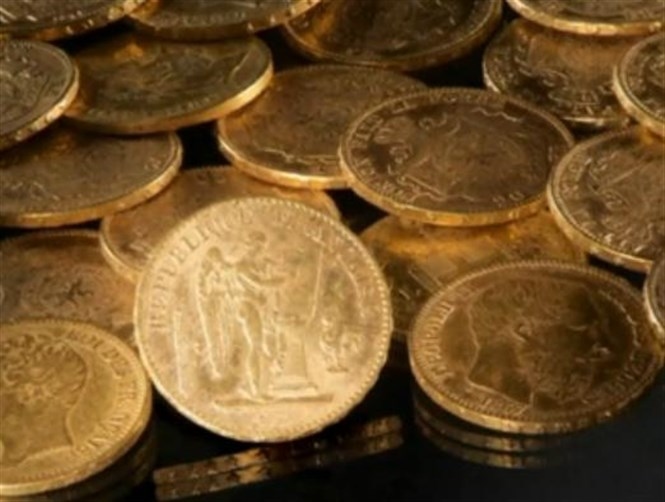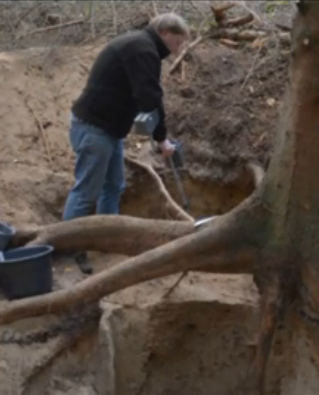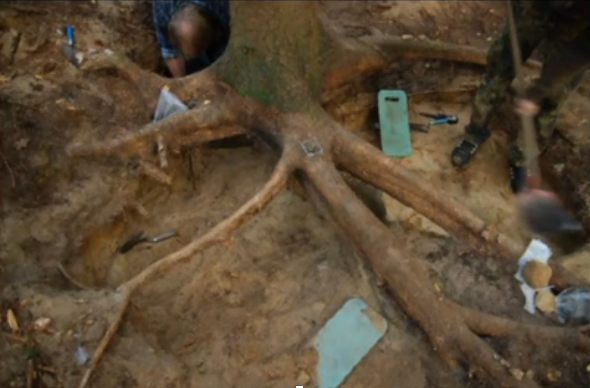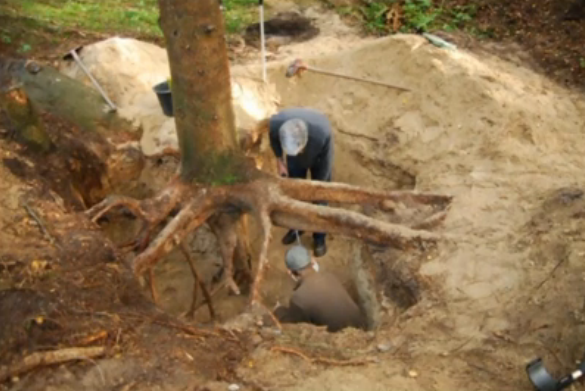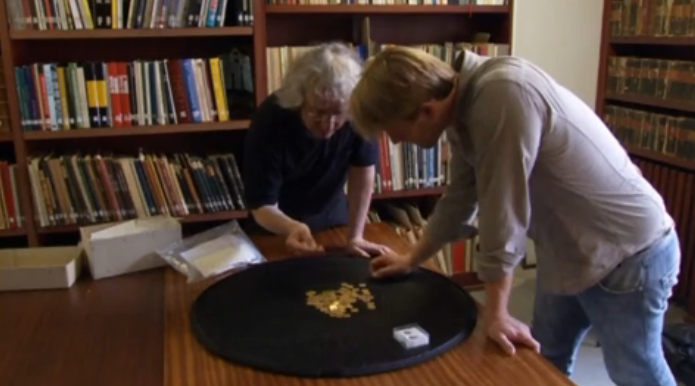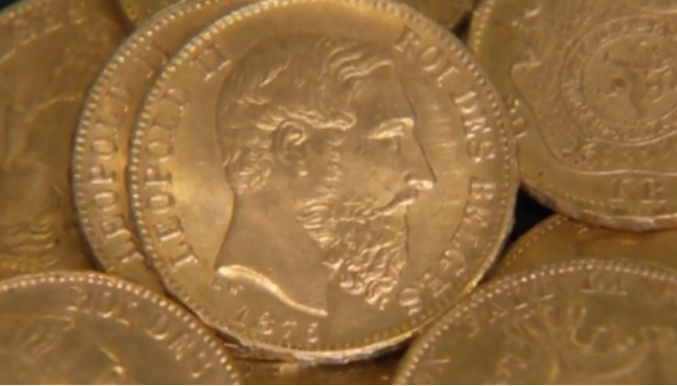The Daily Mail
A historic collection of gold coins buried in the last days of the Second World War has been unearthed by an amateur archaeologist.
The hoard was found in paper embossed with the Nazi swastika and eagle, bearing the words ‘Reichsbank’.
This suggests the coins were stolen from Germany’s wartime bank and the crime may have been an inside job, as chaos reigned in the final days of the Third Reich.
Armed with a metal detector, Florian Bautsch found 10 coins in a hollow under a tree near the northern town of Lueneburg and professionals then excavated another 207.
They are of French, Belgian, Italian and Austro-Hungarian origin and date from 1831 to 1910.
Two aluminium seals featuring swastikas, eagles and the words ‘Reichsbank Berlin 244' were discovered under the field with the coins.
Mr Bautsch, 31, a sales rep, said: ‘I knew I had found something significant when the detector began going mad in my hand.
‘I retrieved ten coins from a hole a metre deep and then I got on the phone to the authorities.’
Florian, a licensed treasure hunter, will most likely receive a small reward for his discovery.
Germany's central bank was called Deutsche Reichsbank during the Nazi era and an analysis of the metal in the seals suggests they were made some time after 1940.
‘This was all found under a pine tree that is around 50 years old ... and that must have grown afterwards ... so we know it must have been buried in the last days of the war or shortly afterwards,’ Mario Pahlow, a local archaeologist, told Reuters.
He and other archaeologists analysing the trove say it was probably part of the Deutsche Reichbank's gold reserves and the fact the coins were buried suggests they were stolen.
Edgar Ring, an archaeologist at Museum Lueneburg, said the culprit was probably an insider.
‘It was either someone who worked at the Reichsbank and had access, which means it could have only been someone who was there in an official role, or somebody who took advantage of the situation when the coins were being transported.’
Dr Henning Hassmann, of the state archaeological department said: ‘We believe the money was hidden away in the last days of the war.’
The Reichsbank dispersed vast quantities of gold, silver and money in secret hiding places across Germany as Berlin crumbled under the assault of Allied bombers.
The coins have a diameter of 0.8 inches (21 millimetres) and weigh 0.2 ounces (6.45 grams) each.
Pahlow said the coins, which are in ‘excellent condition’ and have not yet been claimed, are worth between €190 (£132) and €210 (£146) each, making the collection worth around €45,000 (£31,335).
‘It's hard to work out what these coins were worth back then using today's standards but it's reasonable to assume that you could buy a very good suit, including a waistcoat and top hat, with one of these coins,’ he said.
While the coins were found last October, the find has only been made public and will be displayed at Museum Lueneburg.



